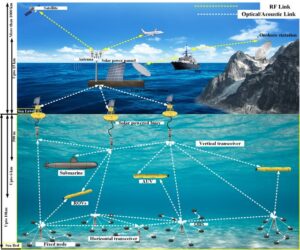Making the ocean even smarter II

I dove into marine bioacoustics in 1992 because there was a public hearing at the University of Santa Cruz on a proposal afoot at the time to ensonify the entire Pacific Ocean basin with a test signal to sense the thermal densities of the sea.
Designed by the brilliant physical oceanographer, Walter Munk, the program was called “Acoustic Tomography of Ocean Climate” (ATOC). The idea was to use long wavelength, infrasonic acoustical energy to explore the thermal vagaries in the ocean much in the way that short wavelength, ultrasonic acoustical energy is used to explore tissue densities in our bodies.
This perked up my interest because of my concern for the impacts a signal like this might have on marine life. And having not thought about it too much, the idea of making noises loud enough to fill the Pacific Ocean basin seemed a bit terrifying.
In the end the ATOC signal in-and-of-itself was not particularly pernicious. The signal was a pretty low on the kurtosis scale, and as it happens, due to the sound transmission properties of seawater, it doesn’t take a lot of energy to generate a sound in the ocean that can be heard thousands of miles away.
Of course the prospect of transmitting coherent signals across ocean basins perked up the imaginations of military and industrial communication engineers. Walter Munk himself had been speaking about a “Sea Net” – well before the internet had become a common element of our civilization. Because sound propagates so well in water, it becomes a ringer for acoustical communication. Just ask all of the animals live in it… which is what the physical oceanographers didn’t do.
Military sonar, seismic airguns, pile driving, and shipping noise are the most obvious. But as our technologies become more complicated, underwater communication signals also become more complicated. What was once a chirp or jingle that turned a valve, or released a catch, has become a data stream that announces equipment conditions and tracks and controls operating states.
So herein lies our problem; as we expand our technologies into the ocean – along with the increasingly complex communication signals required to operate the technologies, how will this impact critters who are already communicating through these same acoustical communication channels?
In our last newsletter on “Making the Ocean Smarter,” we introduced Tim Schoechle, from the International Standards Organization (ISO) group working on underwater communication signals in what hey are terming the “Underwater Internet of Things” (UIoT). Tim came to our ISO group suggesting we form a “Joint Working Group” to navigate their work in defining these various communication signals.
As an example; we terrestrial animals are always being subjected to the high-frequency electro-magnetic energy that comprises the “Global Positioning System” (GPS) we all depend on. And the preponderance of evidence suggests that these signals have negligible impact on us. But due to the energy propagation characteristics of seawater, coupled with the desired spatial resolution, underwater GPS signals will likely be acoustic, and likely be in the 8kHz – 25kHz range; overlapping human auditory range, and smack-dab in the sweet spot of marine mammal hearing range (as well as some fishes, and likely some marine invertebrates…).